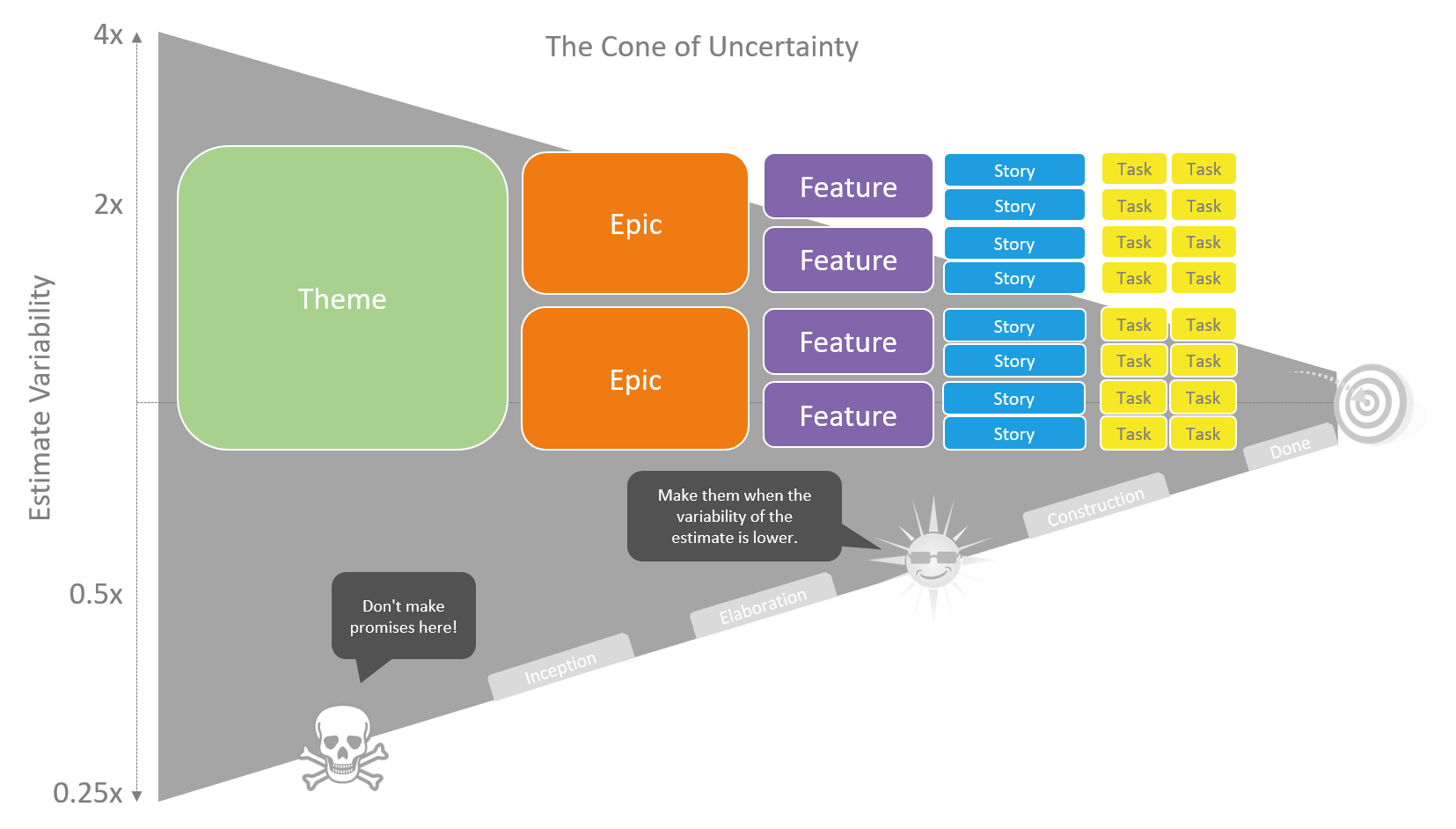Cone of Uncertainty
The Cone of Uncertainty is a graphic depiction of the increasing accuracy that is possible for estimates as the details of a project become more known over time.
- Snippet from Wikipedia: Cone of uncertainty
In project management, the cone of uncertainty describes the evolution of the amount of best case uncertainty during a project. At the beginning of a project, comparatively little is known about the product or work results, and so estimates are subject to large uncertainty. As more research and development is done, more information is learned about the project, and the uncertainty then tends to decrease, reaching 0% when all residual risk has been terminated or transferred. This usually happens by the end of the project i.e. by transferring the responsibilities to a separate maintenance group.
The term cone of uncertainty is used in software development where the technical and business environments change very rapidly. However, the concept, under different names, is a well-established basic principle of cost engineering. Most environments change so slowly that they can be considered static for the duration of a typical project, and traditional project management methods therefore focus on achieving a full understanding of the environment through careful analysis and planning. Well before any significant investments are made, the uncertainty is reduced to a level where the risk can be carried comfortably. In this kind of environment the uncertainty level decreases rapidly in the beginning and the cone shape is less obvious. The software business however is very volatile and there is an external pressure to decrease the uncertainty level over time. The project must actively and continuously work to reduce the uncertainty level.
The cone of uncertainty is narrowed both by research and by decisions that remove the sources of variability from the project. These decisions are about scope, what is included and not included in the project. If these decisions change later in the project then the cone will widen.
Original research for engineering and construction in the chemical industry demonstrated that actual final costs often exceeded the earliest "base" estimate by as much as 100% (or underran by as much as 50%). Research in the software industry on the cone of uncertainty stated that in the beginning of the project life cycle (i.e. before gathering of requirements) estimates have in general an uncertainty of factor 4 on both the high side and the low side. This means that the actual effort or scope can be 4 times or 1/4 of the first estimates. This uncertainty tends to decrease over the course of a project, although that decrease is not guaranteed.
